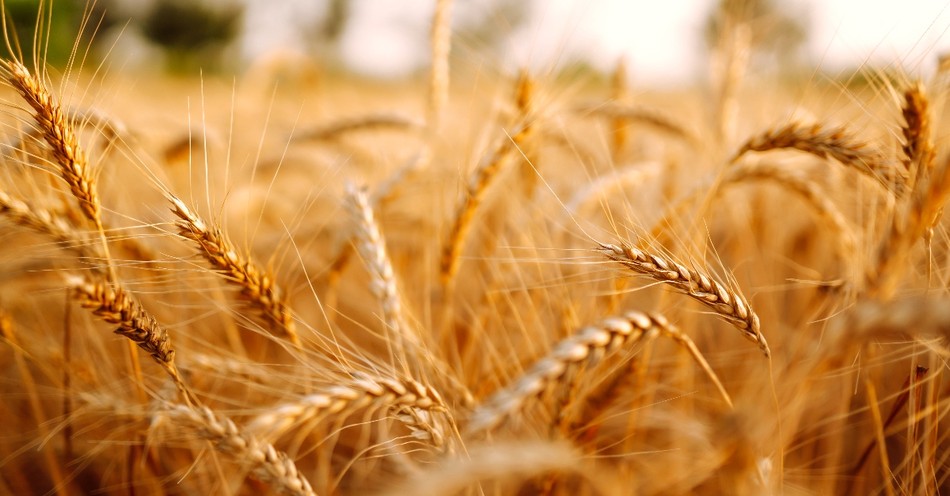I almost didn’t get my $20.
My neighbor had asked me to mow his yard and do some weed-eating. I suppose the going rate was about $20 back then because I was ecstatic to be entrusted with a job and to make a little cash. But my “weed”-eating cost him a bit more than 20 bucks.
I was an ignorant 13-year-old and couldn’t yet discern the difference between a weed and an expensive shrub that he’d recently planted.
I did get rid of his weeds. But I took a valuable shrub down with them. Before they are full-grown, it can be difficult to discern a weed from a plant.
Might the same be true of a new believer? Is it possible that a new disciple might not look much different than a person of the world at first? Jesus tells us a parable in Matthew that seems to make this point.
What Are Wheat and Tares?
In Matthew 13:24-30, Jesus tells a parable about a farmer who sows good seeds in the field, but while they are sleeping, an enemy comes in and plants weeds among the wheat, and then goes away.
It wasn’t obvious what the enemy had done until the wheat and weeds started to grow up together. So, what should be done? In Jesus’ parable, somebody suggests uprooting the weeds.
But they are counseled against this, instead, “let both grow together” because in gathering up the weeds, you may accidentally uproot the wheat as well.
The word which is translated as “weeds,” “tares,” or “cockle” is the Greek word zizanion. It is a word that is only used here and likely refers to darnel — which is a weed that mimics wheat but can actually be poisonous if consumed in large quantities.
Regardless of the specific type of weed, the text is clear that this weed is indistinguishable until a later stage of growth. Wheat is valuable, and the tares are dangerous at worst and unwanted at best. But what does this signify?
Thankfully Jesus interprets this parable for us. In Matthew 13:37-39, he lets us know the identity of the various characters in the parable:
He answered, “The one who sowed the good seed is the Son of Man. The field is the world, and the good seed stands for the people of the kingdom. The weeds are the people of the evil one, and the enemy who sows them is the devil. The harvest is the end of the age, and the harvesters are angels.”
These are the characters within the parable, but what does it mean?
What Does the Parable of the Wheat and Tares Mean?
Matthew 13 is filled with agricultural metaphors, which explain the kingdom of God. The parable of the sower ends with an encouraging note that good seed will produce abundant fruit that yields “in one case a hundredfold, in another sixty, and in another thirty.”
The Kingdom of God will make inroads into society. But the kingdom of heaven is also like the wheat and the tares. What does that mean?
First, note that the locale of this parable, the field, is not interpreted as the church but as the world. That means that Jesus is saying there will be believers and unbelievers living together within the world.
And at times, those who are sown by the enemy will be hard to distinguish. Keep in mind that someone like Judas Iscariot would have been present for this parable, and from all appearances within the New Testament, not a single disciple was suspicious of Judas.
But there were other disciples, like Peter, who couldn’t stop putting his foot in his mouth. If one didn’t know the conclusion to the events of the gospel account, you might easily conclude that some of the disciples like James, John, or Peter weren’t authentic disciples — but Judas might seem legit.
Many have interpreted this parable to mean that there will be believers and unbelievers within the church until the end of the age. While this might be true practically speaking, it is hardly what the text says.
The text is clear that the “field is the world.” This is not about the intermingling of believers and unbelievers in the body of Christ. It is about the kingdom of God coming, but judgment is still being delayed. D.A. Carson explains it well:
The Kingdom of heaven, rather, is like this story. The kingdom comes, but the judgment is yet delayed. When the judgment does come, the separation is absolute, and the destinies of the sons of the Kingdom and the sons of the devil are entirely distinct. But, for the moment, the kingdom dawns without the judgment taking place (Carson, 81).
How would it be that the Messiah is reigning, and yet there is still evil? That is more what this parable is concerned with. Yes, it has implications for how we relate to those in the world and in the church.
But the point here is that there will be a marked distinction between believers (wheat) and unbelievers (tares) and their eternal destiny. What, then, does the application look like for us today?
How Do We Apply This Today?
If you take the interpretation of those like St. Augustine, who believed the point was that Satan would sow false believers into the church, then your application will be different.
One point of application that you might make is to say that churches should not bother with things like church discipline or trying to make the church as pure as possible.
There is certainly some wisdom in not stamping out every fire we see. While using a different text, the heart of Richard Sibbes in The Bruised Reed might be a helpful read on this point.
I personally do not agree with Augustine’s interpretation of the text. For me, that means my application will be different.
I think these verses give hope that the kingdom will grow, but it also explains our disappointments. We aren’t yet living in the New Heaven and the New Earth.
There is still evil in the world, and yes, there are evil people. But it is also a reminder that I do not see with 20/20 vision.
There might be those who appear to be tares who are actually wheat (and vice versa). It is best to leave it up to the Master to take care of the harvest.
It is also encouraging to know that eventually, God will separate the righteous from the wicked. The righteous (those who are trusting in Christ) will be rewarded. But in the here and now, there will be difficulties and, at times things, which seem unexplainable.
What Asaph says in Psalm 73 is helpful here. It might seem as if those who are unbelievers have things better than the righteous. We might wonder, like Habakkuk, why God doesn’t in the present do away with all wickedness.
The point of this parable, then, is to remind us to trust the Lord of the Harvest. He knows perfectly those who are His and those who are not.
Lastly, it is helpful to be reminded that there will be a separation in another world. Spurgeon said it well in The Metropolitan Tabernacle Pulpit Sermons: “This separation must be made; for the growing of the wheat and the tares together on earth has caused much pain and injury, and, therefore, it will not be continued in a happier world.”
Someday evil will be no more. Let us be certain that we are trusting in Christ and that through our union with Him, we will be gathered into the barn.
For further reading:
What Were the Parables of Jesus?
Why Didn’t the Disciples Understand Some of the Parables of Jesus?
What Is a Parable in the Bible? Meaning and 10 Examples
Photo Credit: ©iStock/Getty Images Plus/Maksym Belchenko
Mike Leake is husband to Nikki and father to Isaiah and Hannah. He is also the lead pastor at Calvary of Neosho, MO. Mike is the author of Torn to Heal and Jesus Is All You Need. His writing home is https://mikeleake.net and you can connect with him on Twitter @mikeleake. Mike has a new writing project at Proverbs4Today.


.jpg)
